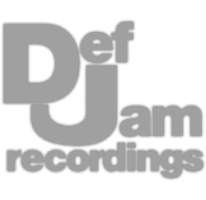Professional Analog Mastering.
Professional Analog Mastering.










This is a faithful recreation of the Curve Bender Mastering Equalizer. Just like the original, we can affect the left and right as well as the mid and side channels separately
We get 4 bands with 2 Q values, low and high Pass filters, and can view some metering with the toggles up top.
Although I don’t use this plugin too often, I have to admit that it sounds fantastic and adds a noticeable character to the signal. Let’s listen to it on a stereo mix.
Watch the video to learn more >
Admittedly, Izotope’s Ozone suite isn't my favorite, but their imager is pretty unique - offering 4 bands with distinct imaging is definitely helpful and something that I see as a shortcut on an instrument bus like BGVs or Guitars.
It sounds great; it’s simple to use, and it offers something other stereo imaging plugins don’t - frequency-specific imaging and selectable imaging types.
I don’t think this version is the most up-to-date since they update their mastering suite so often, but let’s take a listen to it on an instrument bus.
Watch the video to learn more >
Although I thought that this plugin would replace the Pro Q 3 - for me, it was a little too cumbersome to use on a regular basis. That said, it does offer the most functionality and features of any parametric EQ currently available, with 32 bands, dynamic EQ, a huge number of filters to choose from, and more.
So, if you’re looking for an alternative to the Pro Q 3, I’d highly recommend this plugin.
Let’s listen to some of its dynamic features.
Watch the video to learn more >
There are a lot of 1176 emulations out there, but I think that Arturia made the best one - at least the best one that doesn’t require a universal audio processor. Having used the original unit multiple times and similar designs from other companies, this plugin feels like a combination of all of their best assets.
I love the advanced section to get a little more control, especially the time warp function, which creates a surprisingly significant change to the timbre of the compression.
Let’s listen to it on some drums.
Watch the video to learn more >
This mastering compressor is deceivingly simple - there’s a lot going on behind the scenes. The filters are incredibly musical sounding, and unique features like TIBO, which folds side image signals into the lows, or Tremor, which introduces harmonics that match the Earth’s natural resonance, make this a unique EQ.
It includes 5 transformer emulations, 5 different Hardware routing emulations, and a modified circuit, which, when combined with the O2 air and Soul saturation models, creates a fantastic sound.
Let’s listen to it on a stereo mix.
Watch the video to learn more >
Although designed for a simple purpose, this mastering grade de-esser is the most transparent one I’ve ever heard. It gives you 2 filters for de-essing, optional mid-side routing, and, my personal favorite, access to the attack and release times of the de-essing.
With variable compression times, and a soft-knee option, it can create an incredibly smooth and pleasant high end to either a mix or an individual vocal.
Let’s listen to it on some vocals.
Watch the video to learn more >
At first glance, this is an intimidating plugin - but altering the initial view mode makes it easy to tailor the effect for a particular purpose.
Aside from having my favorite compression sound for instrument buses and stereo mixes, it offers so many functions that it’s hard to find a signal it can’t work for.
Some highlights include the INT or interactive detection, which uses variable feed-forward and feedback detection to create a truly unique sound. Duel Phase Rotation is a natural way to soften transients with mild phase cancellation, and the non-linearity dial in the compression window lets you emulate some classic compressors.
Let’s listen to it with the M/S mode enabled to hear how it can be used to widen while introducing a unique timbre.
Watch the video to learn more >
Someone once described this plugin to me as the stock EQ everyone deserves - and he was right.
This is the EQ I always go to when I need to make a quick change to something. Its filters are accurate, it has a great UI, and it offers everything you need to EQ a signal without too many distractions.
The side-chain analyzer is a personal favorite for when I just can’t figure out what’s masking what.
Let’s listen to it with left, right, mid, and side filters enabled to hear how powerful of an effect EQ can be.
Watch the video to learn more >
Like their EQ, FabFilter made a simple, easy-to-use, great-sounding plugin that has some advanced features tucked away if needed.
The Punchy and Dynamic algorithms are personal favorites, and the channel linking dials give a surprising amount of control over the limiter’s attenuation and a signal’s final stereo width.
The loudness meter is a bonus and makes this a great final limiter in a mastering chain.
Let’s take a listen to it and notice how the dynamic algorithm increases the drive of a master.
Watch the video to learn more >
Acustica Audio gets some flak for their often strange marketing, but honestly, this plugin has some of the best saturation I’ve ever heard. Is it kind of clunky? yeah
Does it eat up too much CPU? Definitely. Am I always confused about which one to pick from the menu? Absolutely, but the texture and the imaging more than makeup for all of that.
It’s best on a master, so let’s listen to it on a stereo mix.
Watch the video to learn more >
I want to put this at number 1, but I have to admit, it’s kind of a one-trick plugin. I don’t even use its limiter because I don’t like the sound - but the Enhance function is incredible.
It can take any dull mix or instrument bus and create something spectacular from it, and in a way that other upward processors just can’t.
Let’s take a listen to it on a mix and notice how much the loudness is increased and details are brought to the forefront.
Watch the video to learn more >
I don’t like how helpful this plugin is - because I know if my mixes were better, I wouldn’t need it. Regardless, it’s probably the most useful plugin to use if you can’t figure out what’s missing.
It uses dynamic program-dependent EQ to quickly alter the signal’s frequency response, which typically results in significantly reduced masking.
I don’t think perfect, but it can still salvage any bad mix I have - as well as give me an indication of what frequencies I have too much or too little of by simply dragging the recover and tame functions.
Let’s listen and notice how it makes it easier to hear various instruments by reducing masking.
Watch the video to learn more >
UVI’s EQ is definitely one of a kind - it’s almost identical to the Pro Q 3 and offers a great UI, but it includes modulation.
Once a filter is created, various modulation types can be introduced for both practical and incredibly creative processing.
For example, say I want to introduce an LFO to the frequency of a bell - I’d create the LFO, adjust the settings, and link it to the frequency dial of the filter.
Or, if I want to randomize a filter, I can - or if I want to compress or expand a band based on the side chain, I’d create a follower and link it to the gain.
Let’s listen to and notice how the introduction of modulation makes this EQ incredibly unique and versatile.
Watch the video to learn more >
The Pro-C 2 made it higher up on this list than FabFilter’s EQ or limiter since it can create effects other compressors I have can’t.
Additionally, it’s easy to use, has a good interface, and is super versatile due to the multiple compression algorithms.
My favorite use for it is bringing vocals right to the front of a mix - the vocal algorithm mixed with some lookahead and auto make-up was a game-changer for my vocal chains.
Let’s listen to it tailored for vocals and notice how much work it does without making the vocal sound over-processed.
Watch the video to learn more >
This one would probably be lower on a lot of people’s lists, but I honestly use it on every mix I do in one way or another. Its effect is subtle, but it offers the most realistic emulation of tape that I’ve come across - even when compared to plugins with similar functions.
Personally, I love how everything is integrated - so increasing the bias changes the frequency response as well as the point of saturation.
Speed and Pre-emphasis are heavily correlated to saturation and frequency, while cross-talk introduces noticeable changes to the stereo width and perceived depth of a signal.
I use the Studio mode more often than not, but the Delay and Flanging options also sound fantastic.
Let’s listen to it on a drum bus.
Watch the video to learn more >
Sometimes, I mix and use a different reverb and can’t figure out what’s wrong until I trade out all the reverbs for this one.
It just sounds great no matter what it’s on - it uses impulse responses from the Bricasti M7 reverb unit but with advanced functions like ducking, frequency-specific decay time, and more.
It’s versatile for sure, but it just has something about it that I can’t put my finger on, so let’s listen to it and notice how full, present, and natural it makes the signal sound.
Watch the video to learn more >
Similar to the Gullfoss EQ, this plugin can really help when you can’t figure out what’s wrong - but it offers a lot more flexibility and the ability to tailor the resonance reduction to any particular problem you might encounter.
It works on poorly recorded signals, singers with unpleasant resonances, instrument busses with clashing frequencies, and masters that need very subtle balancing.
The emphasis EQ in the middle, as well as the mix, depth, sharpness of the compression bands, and more, make this a fantastic sounding and incredibly versatile plugin.
Let’s listen to it on some vocals and notice how quickly it cleans them up.
Watch the video to learn more >
Elevate is 4 amazing plugins in 1 interface. It’s a limiter, EQ, transient shaper, and saturator or clipper. The limiter and transient shaper both work with 26 bands - meaning the limiting and shaping are program-dependent and frequency-specific.
When it comes to limiting, I’ve noticed this lets me get a signal louder with less overall attenuation - while the EQ, shaper, and clipper all work together to emphasize what a master needs more of.
If you don’t want to use all 4 processors, they’re also included as separate units.
Let’s listen to it on a master and notice how the combination of processors really improves the sound.
Watch the video to learn more >
I’ll be honest: this is not a great-looking plugin - but no one’s going to see it when they listen to your track. It’s a better-sounding version of FabFilter’s Pro L2 and has a depth to it that plugin doesn’t even try to have.
Like the Pro-L2, we can choose from multiple algorithms but with the option to alter their settings.
Everything from the transient time and shape to the knee of attenuation and post-attenuation expansion can be altered.
I’ve tried a lot of limiters, and once you get the hang of this one, it’s by far the best limiter currently available.
Let’s listen to it on a mix.
Watch the video to learn more >
If you’ve watched our videos before, odds are you saw this coming - this is a personal favorite, and I can see why some people shy away from it, but once you get used to its modulation options, you realize how incredible this plugin is.
Not only do the various distortion types sound incredible, but they can be modulated to create dynamic, realistic, and distinct saturation.
A good example let’s look at the mythical 3D preset:
Multiple envelope followers are adjusting the amount of drive and the drive’s mid-side panning according to the incoming signal and in a frequency-specific way.
Meanwhile, the 3D Depth slider controls the input and output’s respective levels and panning, resulting in dynamic saturation to emphasize depth and dynamic panning to vary the stereo image.
Meanwhile, the multiple bands shape the frequency response via their harmonics and the tone sliders.
Let’s listen to this preset, and I think if you listen a few times, you realize how complex and intricate the effect is.